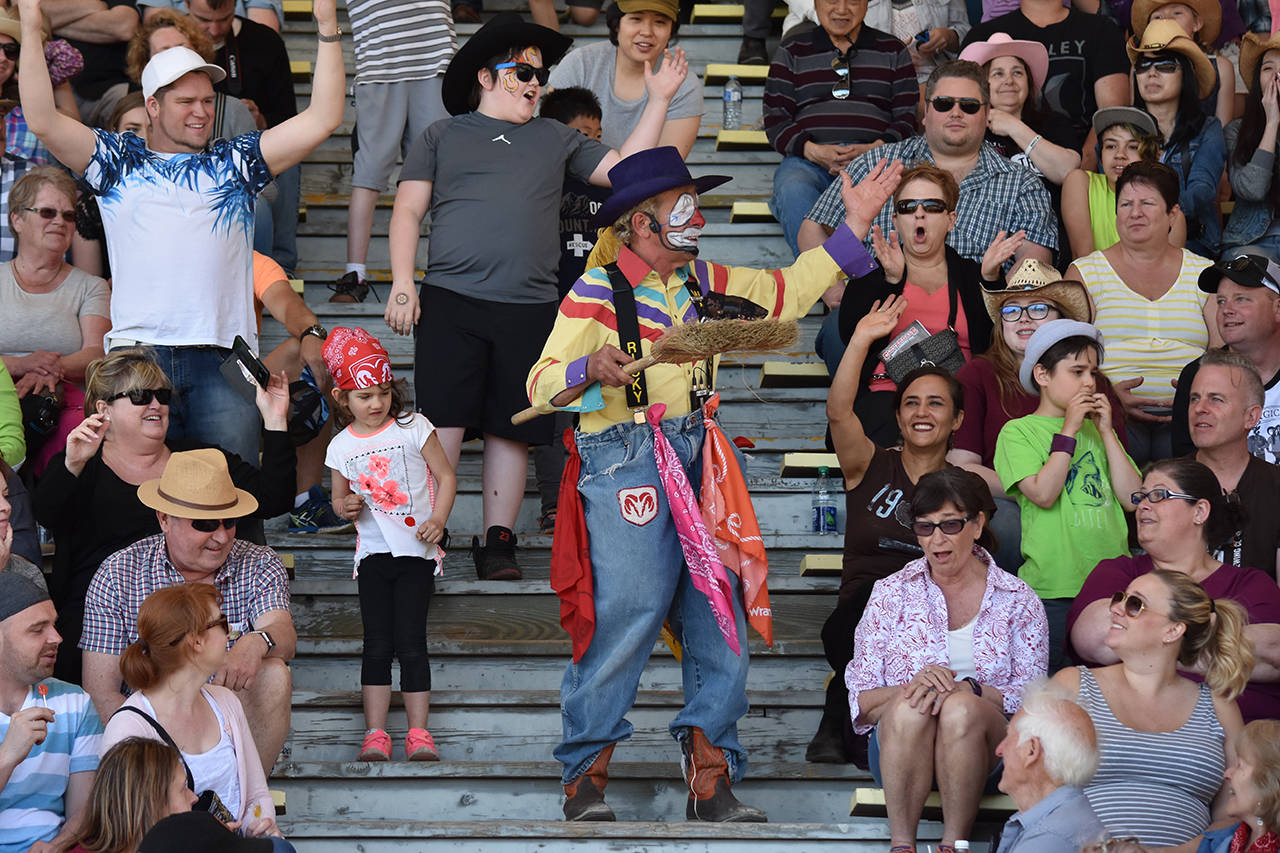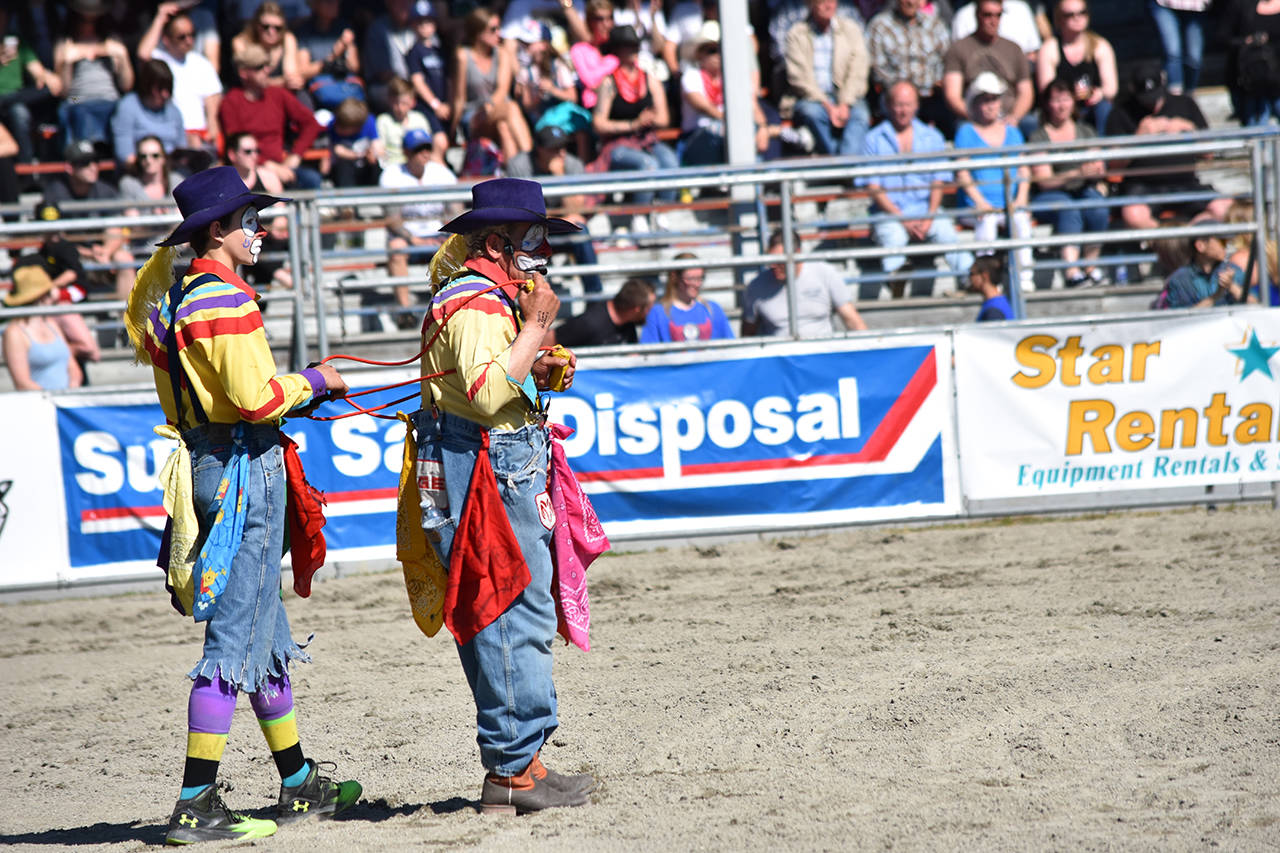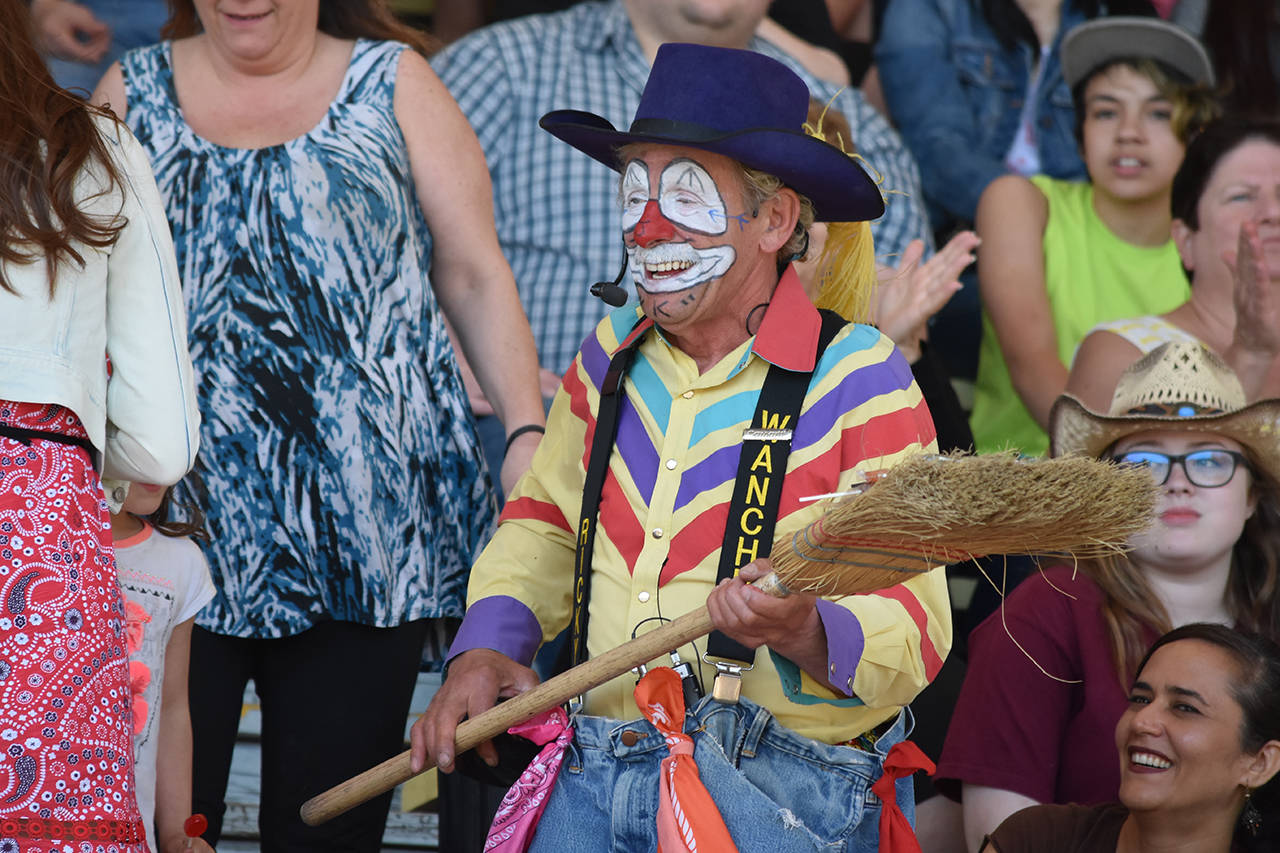At the end of every rodeo, Rick Wanchuk waits by the exit with a bucket of suckers.
The rodeo clown, better known by his stage name Ricky Ticky Wanchuk, is instantly recognizable, with his face painted with classic white eyes and a red nose. Crowds of children and their parents stand around him as he hands out the individually wrapped candies.
In a day, Wanchuk will hand out $150 worth of suckers. Over the 25 rodeos he attends in a summer, he’ll spend between $5,000 and $7,000 in candy.
“It used to be $5 a weekend to $25,” he explained over the phone. “Now it’s up in around $150 a day.”
Wanchuk, 66, was calling from the lunchroom of his off-season job, where he works as a crane operator. It was several weeks before the Cloverdale Rodeo, his first rodeo of the season, and he had just purchased the 1,500 pounds of suckers he would need for the summer.
- RELATED:
“It’s pretty exciting to get ready for the next two weeks, and then make the trip across the mountains to do it,” Wanchuk said. It wouldn’t be his first trip — Wanchuk has been clowning at the Cloverdale Rodeo for nearly 20 years, and working as a rodeo clown in rodeos across the country since the mid-1970s.
In those days, Wanchuk was a young bareback racer who wanted to get into the world of bullfighting.
His first bullfighting rodeo was in Stetton, Alta., about 10 miles from his home in Alberta. It was “pretty scary,” he said, but not in the way most people would expect.
For much of rodeo’s history, bullfighters combined the roles of protector and clown. When the bull was in the arena, they were responsible for distracting the animal to ensure the safety of the bull rider. In between times, they were responsible for entertaining the audience by telling jokes.
Wanchuk wasn’t afraid of the bulls. He was afraid of the people.
“I’ll step around ‘em, get stepped on, it doesn’t matter,” he said about the bulls at the rodeo. “But … all of a sudden there’s a lull in the rodeo and they need someone to tell a story and it was my turn.
“I’d be halfway through the joke or whatever, and I was ever so happy to hear that latch crack, which meant the bull was on its way out, and I didn’t have to worry about the joke anymore, whether people liked it or didn’t like it.”
For the first three years of his bullfighting career, Wanchuk struggled. Then, in 1977 at a rodeo in Big River, Sask., he “darn near got killed” by a bull. Lying on the floor of his camper, while his friend drove the truck away, Wanchuk started thinking about his role in the rodeo and his fear of show business.
“I said, you know, I’ve got a hill to climb here,’” he said. “My plan was to get better at [clowning] and not to worry about it so much.”
- SEE ALSO:
That same injury also prompted Wanchuk to reevaluate how he interacted with children at the rodeo.
During the rodeo, the bullfighters would sometimes have to jump up on the fence to escape a marauding bull. Often, that scared kids in the stands.
“The last thing you’re worried about is a little kid screaming,” Wanchuk said. “Now all of a sudden you glance over and they’re crying because you scared them. And so I’d crawl back under the fence and talk to them and give them a piece of gum.
“And that night when I got hurt there, and I was in that truck, I got thinking about that. I said, you know, that’s not really the right thing,” he continued. “Because the little kid that’s screaming for no real reason other than he was afraid … got gum. His little sister that sat there and just smiled didn’t get anything.”
From 1977 on, Wanchuk’s approach to rodeo’s changed. He handed out gum, and later suckers, to all kids. And he worked hard to become better at public speaking.
He also advocated for the separation of clowning and bullfighting.
“Very early in it I decided this is not good, because you’re concentrating on that bull coming out and what you’re going to have to do … but you’re also trying to concentrate on the people at the same time,” he explained. “I kept campaigning that we need one more guy out there, we need one more guy out there. Of course nobody wants to pay for that.
“There was times I just hauled somebody else with me, fed him and stuff.”
Now, nearly 40 years later, bullfighting and clowning are separate, at least at the Cloverdale Rodeo. But Wanchuk still brings another guy along with him to help with his shows.
This year, it will be his 15-year-old son Kyle, who’s helped his dad in shows since he was two or three.
“Sometimes it’s very challenging when they’re that little,” Wanchuk said about his sons helping him as toddlers (both his son Kyle and his older son Kolby were involved in his clowning). “But they both picked up on it.”
It’s unlikely either will continue in the rodeo clown business, however. Kolby is already an accomplished bronc rider — Wanchuk hopes he’ll someday get an invitation to the Cloverdale Rodeo — and Kyle is starting as a roper in high school rodeos. But for now, there will always be at least one Wanchuk at the rodeo.
“I guess one day my life will expire, but it will be out in the arena,” Wanchuk said. “It’s hard to quit something you love. So I figure if I don’t have to do that, that’s a great thing.”
editor@cloverdalereporter.com
Like us on Facebook and follow us on Twitter






